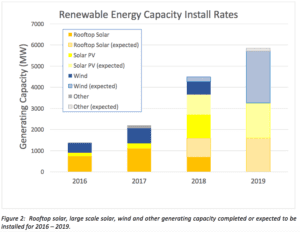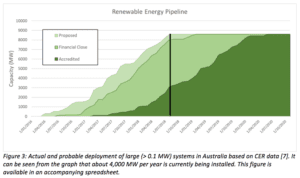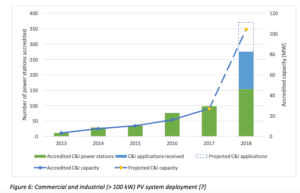Australia could reach 100 per cent renewables by the early 2030s, and smash its Paris emissions targets five years early, all by doing nothing more than maintaining the current pace of wind and solar development, new research has found.
The report – published by a team of Australian National University researchers, including solar PV and pumped hydro expert Andrew Blakers – puts the nation on track to install about 10,400MW of new renewable energy in 2018 and 2019.
By keeping up this rate, it says, Australia eclipse the RET with 29 per cent renewables in 2020, 50 per cent by 2025 and meet the equivalent of 100 per cent of its electricity demand with renewable energy by the early 2030s.
Furthermore, staying on the current trajectory would see electricity sector emissions reduced by 26 per cent in 2021, and the Paris economy-wide emissions reductions target of 26 per cent met five years early, in 2025.
But while the ANU experts have every faith in the renewable energy industry – and the technology – to get the job done, they have their doubts about the politics, which at a federal level is now more uncertain than ever for investors in solar and wind.
“Australian industry is proving it’s not difficult or expensive to make deep and rapid cuts to greenhouse gas emissions,” said ANU Energy Change Institute director Professor Ken Baldwin in comments on Monday.
“All the evidence points to Australia’s capacity to be a renewable energy superpower, with all the economic and environmental benefits that come with that.
“We need Australia’s governments to put in place the right plans for the renewable energy train to have a smooth ride,” he said.


